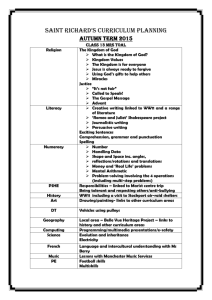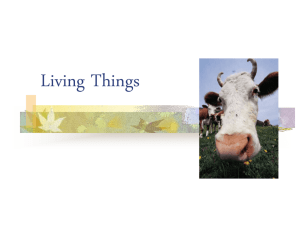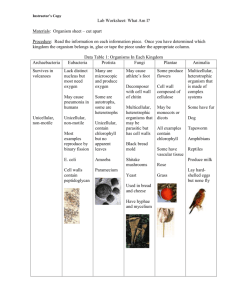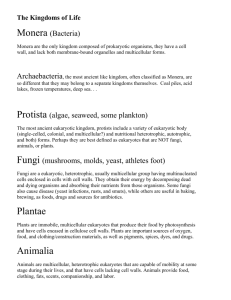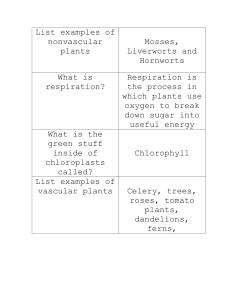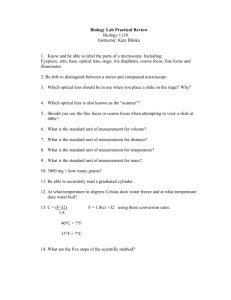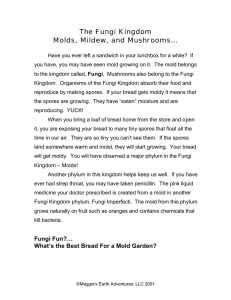Evolution & Classification Test Review 1. What famous scientist is
advertisement
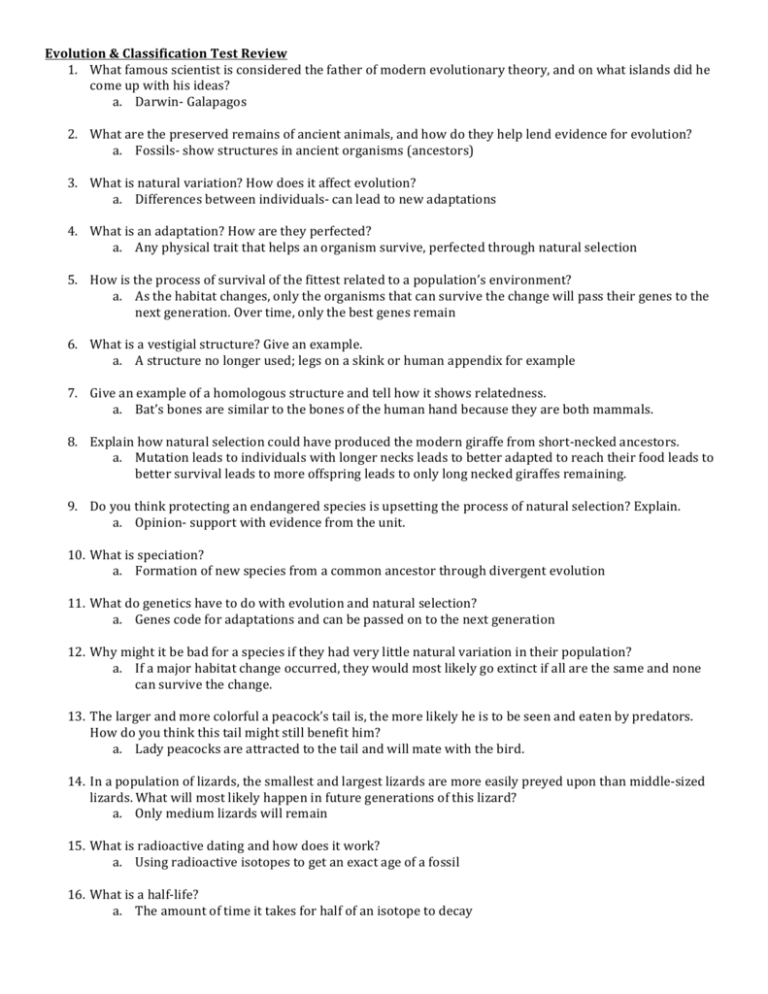
Evolution & Classification Test Review 1. What famous scientist is considered the father of modern evolutionary theory, and on what islands did he come up with his ideas? a. Darwin-­‐ Galapagos 2. What are the preserved remains of ancient animals, and how do they help lend evidence for evolution? a. Fossils-­‐ show structures in ancient organisms (ancestors) 3. What is natural variation? How does it affect evolution? a. Differences between individuals-­‐ can lead to new adaptations 4. What is an adaptation? How are they perfected? a. Any physical trait that helps an organism survive, perfected through natural selection 5. How is the process of survival of the fittest related to a population’s environment? a. As the habitat changes, only the organisms that can survive the change will pass their genes to the next generation. Over time, only the best genes remain 6. What is a vestigial structure? Give an example. a. A structure no longer used; legs on a skink or human appendix for example 7. Give an example of a homologous structure and tell how it shows relatedness. a. Bat’s bones are similar to the bones of the human hand because they are both mammals. 8. Explain how natural selection could have produced the modern giraffe from short-­‐necked ancestors. a. Mutation leads to individuals with longer necks leads to better adapted to reach their food leads to better survival leads to more offspring leads to only long necked giraffes remaining. 9. Do you think protecting an endangered species is upsetting the process of natural selection? Explain. a. Opinion-­‐ support with evidence from the unit. 10. What is speciation? a. Formation of new species from a common ancestor through divergent evolution 11. What do genetics have to do with evolution and natural selection? a. Genes code for adaptations and can be passed on to the next generation 12. Why might it be bad for a species if they had very little natural variation in their population? a. If a major habitat change occurred, they would most likely go extinct if all are the same and none can survive the change. 13. The larger and more colorful a peacock’s tail is, the more likely he is to be seen and eaten by predators. How do you think this tail might still benefit him? a. Lady peacocks are attracted to the tail and will mate with the bird. 14. In a population of lizards, the smallest and largest lizards are more easily preyed upon than middle-­‐sized lizards. What will most likely happen in future generations of this lizard? a. Only medium lizards will remain 15. What is radioactive dating and how does it work? a. Using radioactive isotopes to get an exact age of a fossil 16. What is a half-­‐life? a. The amount of time it takes for half of an isotope to decay 17. What is relative dating and how does it work? a. Estimating the age of a fossil compared to the fossils around it. Ex-­‐ deeper in the ground = older 18. Can you think of an instance where two different species would have to evolve together? a. Predator and prey 19. What is macroevolution? Why is it the most controversial part of evolution? a. Large changes in evolution created by the accumulation of smaller changes. Difficult to understand because the resulting species are so incredibly different, i.e. reptiles to birds. 20. The half-­‐life of carbon-­‐14 is 5730 years. What is the age of a fossil containing ¼ (25%) the amount of carbon-­‐14? a. 11,460 years (b/c two half-­‐lives have gone by.) 21. What is taxonomy? a. Study of classification 22. In the name Rhizopus nigricans, Rhizopus is the GENUS and nigricans is the SPECIES_. 23. Give the classification groups in order starting with kingdom and working your way down to species. a. Kingdom Phylum Class Order Family Genus Species 24. What are the five kingdoms? a. Plantae, Animalia, Fungi, Monera, Protista 25. What does a phylogenetic tree show? a. Relatedness 26. What does a cladogram show? a. Shared Characteristics 27. Draw an example of a cladogram here, including at least three species of your own choosing. a. Fish -­‐-­‐-­‐-­‐-­‐-­‐-­‐-­‐-­‐-­‐-­‐-­‐-­‐-­‐-­‐-­‐-­‐-­‐-­‐Turtles-­‐-­‐-­‐-­‐-­‐-­‐-­‐-­‐-­‐-­‐ -­‐-­‐-­‐-­‐-­‐-­‐-­‐-­‐ Humans animals-­‐-­‐-­‐-­‐-­‐-­‐-­‐land dwellers-­‐-­‐-­‐-­‐-­‐-­‐-­‐-­‐-­‐warmblooded 28. Name two kingdoms that include ONLY heterotrophs. a. Fungi and Animalia 29. Why do biologists use Latin when naming species? a. Dead language, so it never changes 30. Why and how do scientists classify? a. Anatomical, behavioral, and genetic similarities 31. What characteristic differentiates the Kingdom Plantae from the Kingdom Fungi? a. Plants are autotrophs, fungi are heterotrophs 32. Which kingdom is considered a “junk drawer” kingdom, because the organisms in this kingdom don’t quite fit anywhere else? a. protista 33. Most protists are multicellular/single celled? (Circle one) 34. Most fungi are photosynthetic/carnivorous/herbivorous/decomposers. (Circle One) 35. What two characteristics are shared by all members of the plant kingdom? a. Multicellular and autotrophic 36. What two characteristics do all members of the animal kingdom have in common? a. Multicellular and heterotrophic

